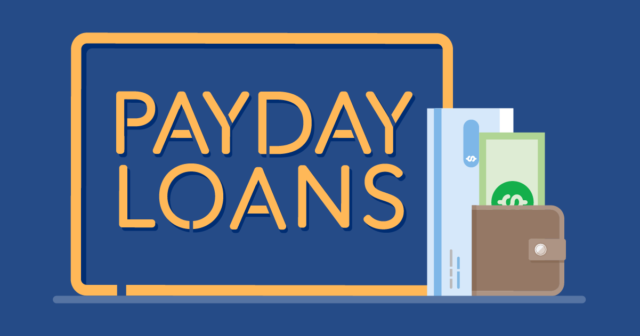Know its advantages but above all its risks in case of not covering them.
It happens to all of us. Suddenly an unforeseen event arises and it turns out that payday is a long way off. For many people, it is easy to use payday loans, which are short-term loans to be paid in full on the debtor’s next payday.
But to be able to use them, we must be very clear about what they are and what their benefits are, in addition to understanding what happens if we cannot pay them when they are due, because the remedy could be more expensive than the disease.
For example, if you need to replace a tire on your car and decide to use a payday loan to help cover the expenses, then you will have to pay back the loan on the day you receive your paycheck or pension.
How do payday loans work?
Example:
- If you apply for a loan of $500 dollars with a fee of $100.
- So you give the bank a $600 check or you give them your bank account number so they can withdraw the money from your account.
- The bank keeps your check and gives you $500 in cash.
- In 16 days you must pay the bank $600 in cash and they return your check to you.
*So you paid $100 to take $500 cash.
Payday loans can be an attractive and convenient solution to get out of trouble or unexpected expenses. However, you must be very careful, since these loans have a high interest rate, usually from 400% to 500%. While if you compare the interest rate of a credit card or personal loan, these can vary from 12% to 28%.
For example, if you take out a $500 payday loan with a $100 fee, the interest rate on the loan would be 456.25%. In total you will pay $600 for the payday loan.
- Payday loan: $500
- Fee for obtaining the loan: (20% of the loan): $100
- Interest rate: 456.25%
- Term: 16 days
- Total : $600.00
When analyzing payday loans, we can see that the interests are extremely high if we compare them with the interests offered by credit cards. For example, with a credit card that pays 20% interest if you have a balance of $500 in the account, you could pay $46 per month for 12 months. In the end you would pay a total of $552.
Example:
- Credit card balance: $500
- Interest rate: 20%
- Monthly payment: $46
- Term: 12 months
- Total: $552
What happens if I don’t pay the loan on or before the due date?
If you don’t repay the loan on the agreed date, the lender can extend the term if you pay the loan charges. For example, if you can’t pay the $600 on April 16, if you pay $100 (loan charges) the bank can extend the due date.
Before obtaining a payday loan you can consider the following options:
1. Citi Simplicity Card
This credit card offers 0% interest on balance transfers for 21 months (starting from the first transfer made) and offers 0% interest on new purchases for the first 12 months. Then the interest will be a variable from 16.24% to 26.24%. Balance transfer fee is $5 or 5%, whichever is greater, and there are no annual fees.
2. Discover it Cash Back
The Discover it Cash Back Credit Card offers 14.24% to 25.24% APR (variable); 0% introductory APR on purchases and balance transfers for 14 months. In the same way, for each purchase you make you can receive 5% of the total purchase back.
